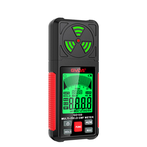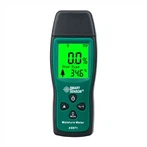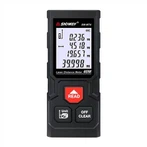What do LEL%/VOL% and ppm mean respectively in gas detectors?
With the development of technology, gas detectors have become very common in industries such as petrochemicals, chemical manufacturing, pharmaceutical microbiology, etc. Whether it is detecting gas concentration, gas composition, or detecting gas micro leaks, a useful gas detector can provide a safe environment for our production and life. When we use gas detectors in our daily lives, the detection range on the liquid crystal label of the gas detector often appears with words such as 0-100LEL% or 0-2000ppm, or on the liquid crystal display screen of the gas detector, the words VOL% or ppm may also appear. So, what exactly do these three units mean and how are they converted? Today, we will give you a detailed introduction.
1, VOL% (gas volume percentage)
VOL is a physical unit that describes the volume of a gas and is expressed as a percentage. It is the percentage of the volume of a specific gas in air. For example, 5% VOL methane means that the volume of methane in the air is 5%. Our gas detector's detection range is often expressed in terms of VOL%, for example, the detection range is 0-100% VOL, which means that when this gas detector detects a certain gas, it can detect its proportion range in the air from 0-100%. We can also set a certain percentage value of VOL as the alarm point, and when the content of a certain gas reaches or exceeds this set value, the gas detector will sound an alarm. This involves another unit, LEL%.
2, LEL% (lower explosive limit)
We have introduced combustible gases before. The concept of combustible gas refers to the ability to mix uniformly with air (or oxygen) within a certain concentration range to form a premixed gas. When exposed to a fire source, it will explode. Therefore, the lowest volume percentage concentration that this combustible gas can ignite in air, which is what we call the lower explosive limit concentration of gas, LEL%, abbreviated as the lower explosive limit concentration. His unit is also a percentage, which divides the lower explosive limit into one hundred parts, with one unit being 1LEL%. The concentration of gas volume in the lower explosive limit is expressed in VOL%.
3, PPM (parts per million of gas volume percentage)
The concept of PPM is similar to VOL, except that PPM represents one millionth of the volume of gas. For example, 10ppm carbon dioxide refers to the presence of 10 millionths of carbon dioxide in the air. As PPM units are dimensionless, most gas detectors that can detect PPM level are used to detect gas micro leaks in the working environment. Because gas micro leaks are very dangerous, long-term gas micro leaks may cause major accidents, so we need to use PPM level gas detectors to promptly eliminate the location of micro leaks.






